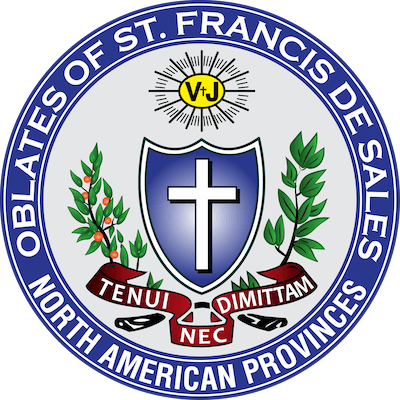Artwork by Bro. Mickey McGrath, OSFS.
Back when I was in college, our campus chaplain, Fr. Jim MacNew, OSFS, introduced to us students how to pray before art. He also taught us how to learn how to spot the symbols hidden within each piece. One night, he introduced us to the artwork by Bro. Mickey McGrath, OSFS. I loved the rich colors and hidden symbols that Mickey placed in his work. Yet, one of his pieces really stuck out to me. (See the image on the right.)
The simplicity of the brown, black, and white pigments contrasted the previous images I had seen of his work, but what really stuck out to me was the ordinary moment portrayed in the artwork: a nun standing at the kitchen sink with her back towards us, holding up a clean plate with steam billowing around her from the hot water. It was so simple, but I couldn’t take my eyes off it. For even amidst the brown hues, the image portrayed a sense of vibrancy and joy.
As my fellow undergrads and I continued to examine this painting on the projector screen, Fr. Mac explained to us how this portrayed St. Thérèse of Lisieux doing the dishes. He cited to us that she desired to be a priest and offer up the Eucharist at Mass. Yet, knowing she could not do so, she went on to live her life by offering up every ordinary task as if she was offering up the Eucharist… even if she was only cleaning the dishes.
Ever since I locked eyes on this painting, St. Thérèse has always been an important heavenly friend of mine. I like to claim St. Thérèse to be “Secretly Salesian.” Although she was a Carmelite nun, her rich emphasis on gentleness, humility, patience, and making the ordinary aspects and duties of life extraordinary seems to hit right at home in our Salesian tradition. For her, everything was sacred. Everything was grace. Everything could be blessed, sacrificed, and given up in thanksgiving to God.
Recently for my course on the Eucharist in my Master’s program, I was reading how St. Augustine defined true sacrifice. For him, true sacrifice is “every work done with the purpose of joining ourselves to God in holy communion” (St. Augustine, City of God). The sacrifice of the altar commemorates Jesus offering His life to the Father for us. Jesus offers His life. When we receive that offering, it does unite our souls with His life, but it teaches us to “live Jesus” and offer our lives back up to God throughout the moments of our day too. That is how, like St. Thérèse in Bro. Mickey’s painting, the sink becomes our altar, the dirty dishes become our presentation of the gifts, and the cleaning, scrubbing, and rinsing become our offering of prayer and sacrifice of thanksgiving given up to God for our sake and for all of those partook in that meal beforehand.
St. Thérèse said that “everything is grace.” Everything. Can you imagine that? Every moment, every person, every email, every chore, every phone call, every task, and, yes, even every dirty dish has the potential to remind us to live eucharistically, or, as we often say, to live Jesus.
As St. Francis de Sales remarked, “There is nothing small in the service of God.” If we can begin to see everything through the eyes of grace and begin to offer the little we can each day, we will become what we have already received. Like St. Thérèse, we will become an oblation, an offering, by giving God our lives in the little ways… even if that starts with simply doing the dishes.
Mr. Jonathan Dick, OSFS
Professed Scholastic
Theological Studies at the Catholic University of America





